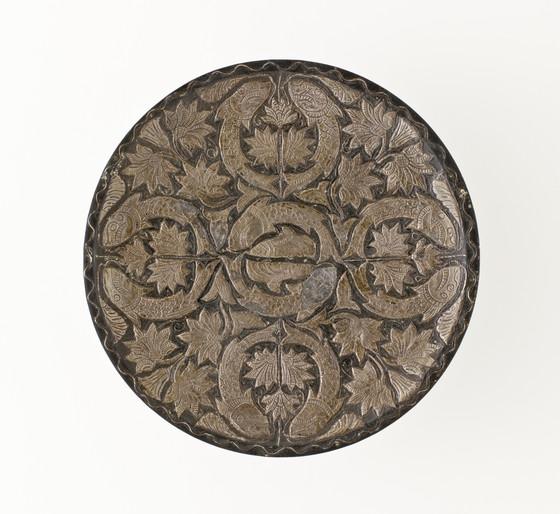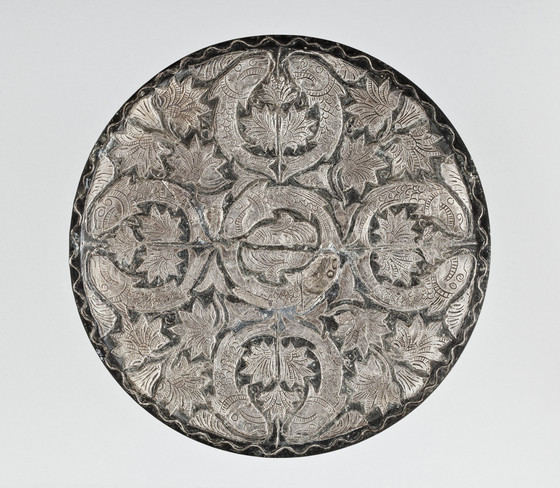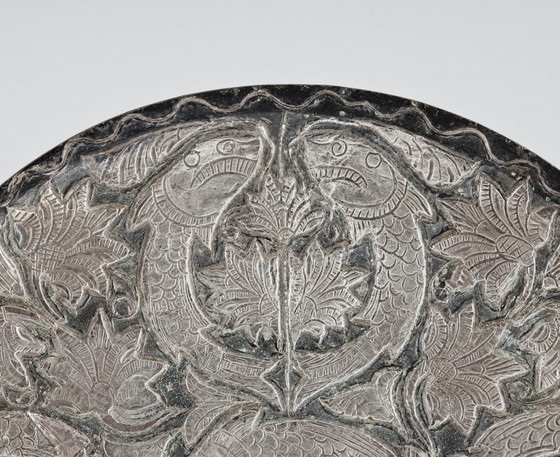Plate with Emblematic Pairs of Fish (mahi-ye maratib)



Please log in to add this item to your gallery.
View comments
No comments have been posted yet.
Add a comment
Please log in to add comments.
Please log in to add tags.
* Nearly 20,000 images of artworks the museum believes to be in the public domain are available to download on this site.
Other images may be protected by copyright and other intellectual property rights.
By using any of these images you agree to LACMA's Terms of Use.
Plate with Emblematic Pairs of Fish (mahi-ye maratib)
India, Uttar Pradesh, Awadh, Lucknow, circa 1880
Furnishings; Serviceware
Bidri-ware (zarbuland technique)
Diameter: 6 3/4 in. (17.15 cm); Height: 1/2 in. (1.27 cm)
Purchased with funds provided by Kiran Wadhwani Samuels in loving memory of Mulchand Navalrai Wadhwani (M.2001.100)
Not currently on public view


